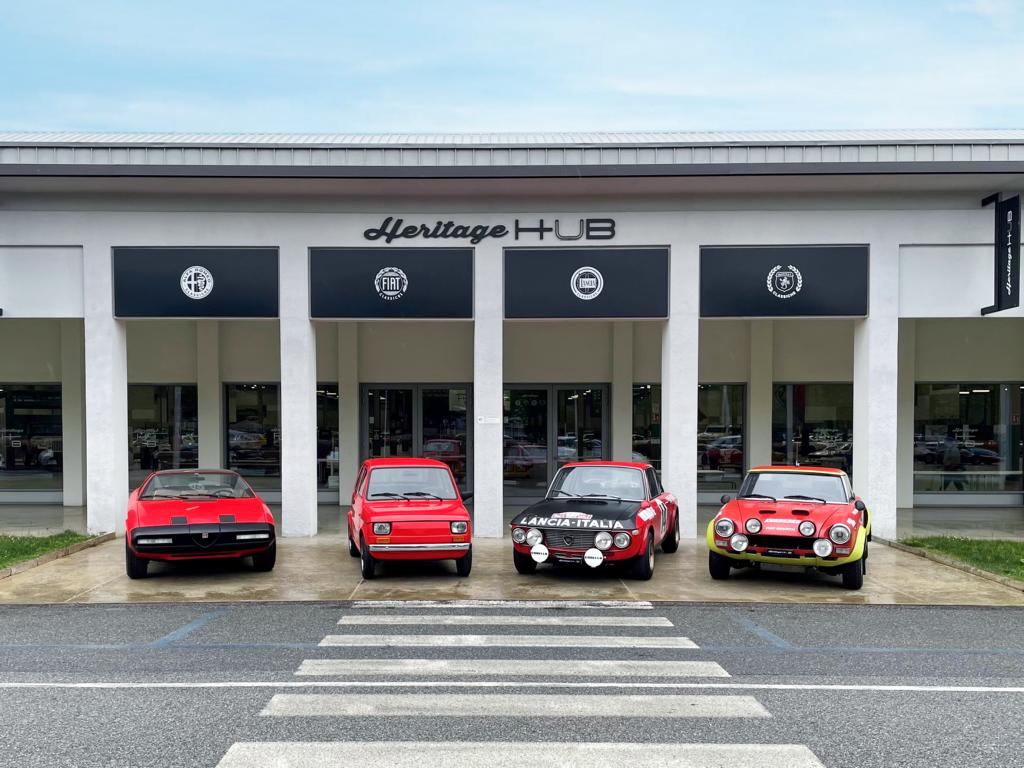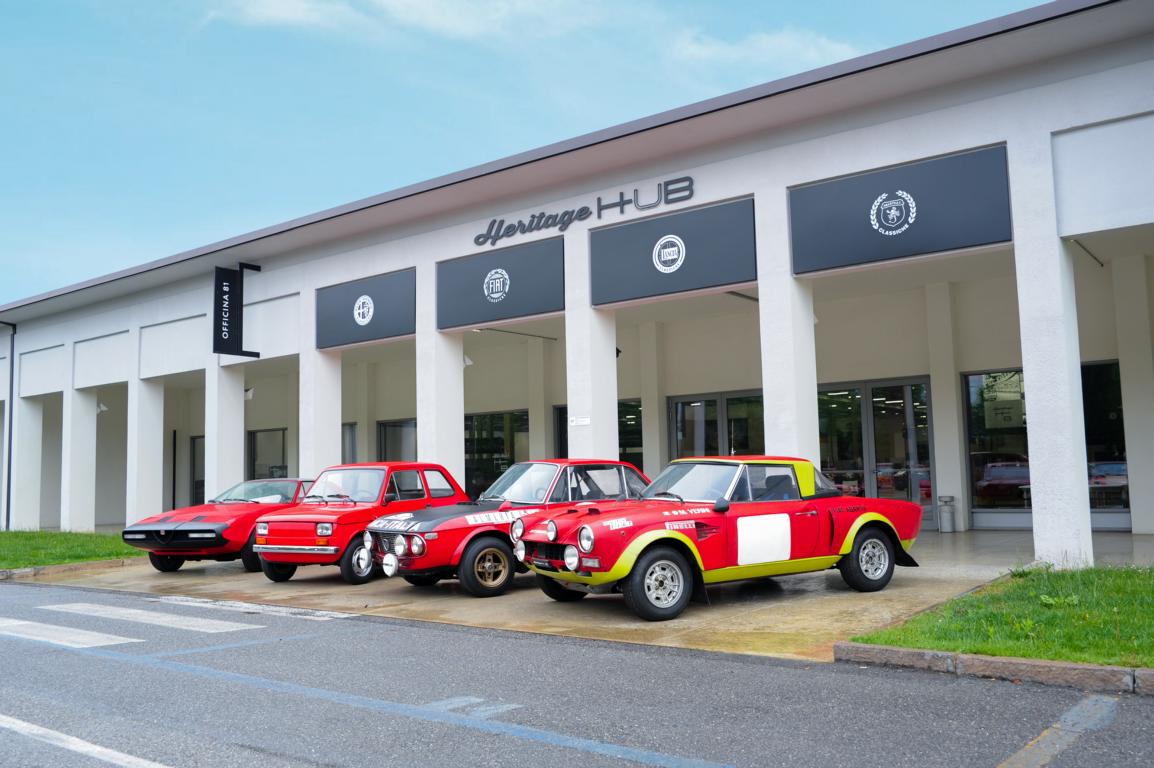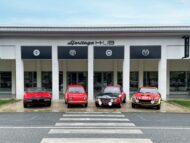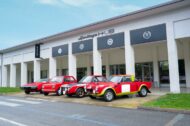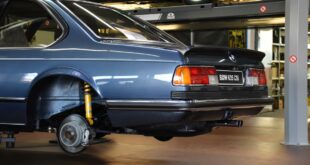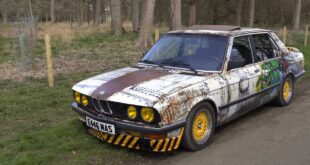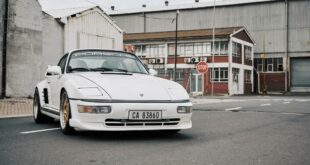Stellantis Heritage is participating with four very special exhibits at the Automotoretrò fair, which will take place from April 28th to May 1st, 2022 in the Lingotto exhibition center in Turin. The department responsible for the historical heritage of the Italian group brands has selected four vehicles from its collection, which totals more than 600 classic cars, celebrating their 50th anniversary this year: the rally version of the Fiat 124 Abarth, a pre-production prototype of the Fiat 126, which took part in the Monte Carlo's 1972 victorious Lancia Fulvia Coupé 1.6 HF and the Pininfarina designed Alfa Romeo Alfetta Spider Coupé.
Automotoretrò fair
The only existing Spider Coupé based on the Alfetta is otherwise in the Alfa Romeo factory museum in the Milan suburb of Arese. The two rally cars and the Fiat 126 have their home at the Stellantis Heritage Hub in Turin. In line with its mission to preserve and capitalize on the historical legacy of Alfa Romeo, Fiat, Lancia and Abarth, the Heritage Hub at the former Mirafiori plant maintains a unique compilation of legendary classics from the Abarth, Fiat and Lancia brands. On the occasion of the Automotoretrò, the Heritage Hub opens its doors for eight exclusive guided tours on the days of the fair. During the two-hour tours, the participants can discover the 64 vehicles in the current exhibition, which is divided into eight subject areas, at their leisure. Also on display: the main engines produced by the Italian brands over more than a century and a documentary on the history of the Mirafiori plant.
The tours take place on Thursday, Friday, Saturday and Sunday at 10 a.m. and 17 p.m. and cost 25 euros for adults and 15 euros for young people under the age of 18. Reservations for groups of at least six people must be requested by email (heritagehub@stellantis.com). At the 39th edition of the Automotoretrò, visitors can experience the most exciting cars and motorcycles – including many racing versions – from all over Europe up close. Models, original spare parts, a classic car market, specialist publishers with their ranges, as well as conferences and events with well-known names from the scene complete the trade fair programme. For the first time, a separate area is also dedicated to sustainable mobility.
Fiat 124 Abarth Rally (Group 4 Rally version)
Production of the Fiat 124 Abarth began in 1972 and ended in 1975. During this period, 995 examples left the Abarth workshops on Corso Marche in Turin. The Fiat 124 Abarth served as the basic version for a rally version greatly improved according to the rules of the so-called Group 4, with which Fiat contested the world championship at the factory and which was also very popular with private drivers. Compared to the Fiat 124 Sport Spider, which served as the basis, the Fiat 124 Abarth had an engine output increased by ten to 128 hp, aluminum doors and hoods and hard top made of glass fiber reinforced plastic (GRP). Despite the rear axle being modified to independent suspension, the Abarth variant was almost 60 kilograms lighter than the standard Fiat 124 Sport Spider.
Abarth, the Fiat works team, further developed the standard Spider into a winning rally car. The 1,8-liter four-cylinder made 215 hp in its last expansion stage. Raffaele Pinto became European Rally Champion in 1972 with the Fiat 124 Abarth. Maurizio Verini repeated this success in 1975. In 1974 and 1975, Fiat Abarth was also vice world champion among the designers, before the team even brought three brand world championship titles to Turin with the successor Fiat 131 Abarth. The Fiat 124 Abarth Rally shown at Automotoretrò was driven by Maurizio Verini in the 1975 European Rally Championship. The Italian won the title with five wins and a second place. Distinctive features of the original works car are the bonnet with air intakes and two additional recessed headlights, widened rear fenders with an air intake for the brakes and the two-tone paintwork used by the Fiat Abarth official team in the 1974 and 1975 seasons.
FIAT 126 (prototype)
In 1972, a full 16 years after the Fiat 500 premiered, it was time to think about a successor model. People's mobility needs had changed. The individual journeys became longer and the traffic heavier. In addition, the need for comfort and safety increased. The available space became a key reason for buying. Based on the wealth of experience with small cars, FIAT designed the 126 model. It exhibited the driving behavior and economy of the Cinquecento, but was packaged in a more modern and functional design that was clearly based on its big brother, the Fiat 127.
The engineers took over the technology and mechanics of the Fiat 126 largely from the predecessor Fiat 500. On the other hand, performance and space were increased. The Fiat 126 had an angular body that offered space for four people. The maximum speed was 105 km/h. The self-supporting body with well-placed reinforcements ensured a torsion-resistant passenger cell that was able to absorb the forces that occur in the event of an accident. The hydraulic dual-circuit braking system further increased safety. Independent suspension all around ensured comfort on board. Like the Fiat 126, a two-cylinder engine worked in the rear of the Fiat 500, an engine that had been built around four million times. With a displacement of 600 cubic centimetres, the power was 23 hp.
Aesthetics, materials and quality also played a major role in the development of the Fiat 126. Seats and door panels were upholstered with artificial leather. The entire floor of the vehicle was covered with a nylon mat. Sound insulation also reduced the noise level in the interior. Like the Cinquecento, the Fiat 126 was a huge commercial success. By the end of production in 2000, over 4,6 million copies had been sold to customers throughout Europe. This makes the Fiat 126 the longest-lasting rear-wheel drive model the brand has produced to date.
The Fiat 126 on display at the Turin Classic Car Show is the only remaining prototype. The vehicle was manufactured in 1972 at the Cassino plant. It differs in some details from the later production model. An example is the different position of the air intake for the engine, here mounted behind one of the bonnet grilles. In addition, the prototype has visual features that were only used in the second series of the Fiat 126, including rims in a spoke design.
Lancia Fulvia Coupe 1.6 HF (Group 4 Rally Version)
Launched in 1965, the Lancia Fulvia Coupé was designed by Piero Castagnero, who was inspired by the lines of the Riva speedboats of the time. A four-cylinder engine in an unusually acute-angled V-shape served as the drive. Over the course of the production period, the displacement increased from initially 1,2 to 1,6 liters. All variants were used in rallying – and to a limited extent also on circuits. After the Lancia Fulvia Coupé with 1,2 and 1,3 liter engines had already achieved numerous motorsport successes by the end of the 1960s, the 1.6 HF model became the flagship of the HF Lancia Racing works team from 1969. His greatest success was winning the 1972 Monte Carlo Rally against supposedly superior competitors, some of whom had significantly more displacement.
This success was mainly due to pilot Sandro Munari and his co-driver Mario Mannucci. Their original vehicle from the 1972 Monte Carlo Rally with starting number 14 awaits visitors to the Automotoretrò at the Stellantis Heritage stand. If you look closely, you can see the patina from use in the famous rally. The most famous of all Lancia Fulvias has a 160-liter four-cylinder tuned to around 1,6 hp under the bonnet, which is painted matt black in the style of the time - this was to avoid dazzling the driver. The legendary starting number 14 has earned this vehicle the nickname "Fulvia 14" among enthusiasts.
Alfa Romeo Alfetta Spider Coupe
Also in the same year, the Alfa Romeo Alfetta came onto the market. The model was a milestone in the history of the brand due to its technology. The highlight was the transaxle principle: the engine positioned at the front was combined with a transmission that was blocked with the rear axle. At the Automotoretrò, Stellantis Heritage presents an Alfa Romeo Alfetta with a special connection to the city of Turin: the study developed by Pininfarina of a combination of Spider and Coupé based on the Alfetta was presented to the world public at the 1972 Turin Motor Show.
Taking into account the market trends of the time and new safety regulations, heavily influenced by American legislation, Pininfarina opted for a Targa body with a roll bar which, in the event of a rollover, would offer occupants greater safety than an open spider. The prototype also features pronounced wedge-shaped lines and applied black plastic bumpers. Both were aesthetic solutions that would prove to be major successes in automotive design in the 1970s. The removable roof of the Alfa Romeo Alfetta Spider Coupé is made of a material with variable transparency: black when placed on the roof; transparent when it is removed and transported on the rear window. The engine is the 1,8-liter four-cylinder from the Alfa Romeo Alfetta sedan, which produces 122 hp at 5.500 rpm. Photo credit: Stellantis
Of course, that wasn't the end of it. Our tuning magazine has tens of thousands of other tuning reports in stock. Do you want to see them all? Just click HERE and look around. Or are you especially interested in our Tuning classics category? Then the following excerpt is tuned Young and oldtimers definitely the right place to browse.
other related posts
|
Outstanding result for BILSTEIN in the MOTOR KLASSIK readers' choice! |
|
 tuningblog.eu Your magazine about tuning the car
tuningblog.eu Your magazine about tuning the car
